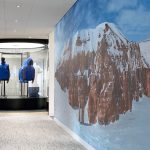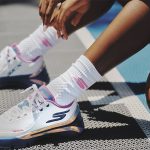During the second quarter of 2008, the first signs of the coming financial crisis were just beginning to be seen by retailers and vendors. Today, the outdoor industry is living in the reality of a market that is vastly different than it was 12 months ago.
For many, this reality includes lower retail inventories, less pre-season ordering, and more at-once business all a plus for retailers. However, vendors are seeing slower sales and tighter margins.
From the 30,000 foot view, the second quarter of 2009 ended June 30 was certainly a difficult time to be in the business of selling equipment, apparel and footwear in the Bicycle, Outdoor and Snow Sports market. The publiclytraded vendors (and others that report data to the SEC) in these markets saw margins and profitability shrink during the second quarter as retailers worked to reduce inventories by placing smaller pre-season orders and clearing out merchandise at bargain basement prices.
These changes in retailers’ metrics slowed growth among vendors and clearly showed some benefit to both margins and the bottom line at retail.
One result of the economic downturn is an almost complete lack of M&A activity – apart from a few deals that had little impact to sales or profitability. This absence of deal flow makes year-on-year comparisons easier.
Second quarter results shown in the charts on page 3 are for those companies that have reported for the period ended closest to the end of June. However, because the report is not a clear picture of the entire industry, BOSS feels the total numbers are less important than the trending information provided in the percentage increase and decrease.
Less than half of the public companies tracked by The B.O.S.S. Report showed an increase in sales during the second quarter, and most of these were retailers. Overall vendor sales declined 9.0% while retail sales inched up 0.7% for the period.
Profits were also difficult to realize during the quarter with 13 of the 24 companies tracked reporting lower profits or larger losses than last year.
Overall vendor profits were essentially cut in half compared to last year, showing a 51% decline for the quarter. Retail profits, on average, were up 4.6% compared to the same quarter last year.
Top-line sales for vendors were heavily impacted especially among hardgoods companies. In softgoods, companies that focus primarily on footwear seemed to fare slightly better than those who sell primarily apparel. Even the apparel company with the best top-line performance, Under Armour, saw a significant boost in sales due to its new footwear initiative.
In the hardgoods sector, sales performance was a mixed bag when analyzed by category. Some snow sports companies showed gains while other showed declines. The same is true with bicycle hardgoods companies and outdoor hardgoods companies. However, the volume of declining sales offset any gains. In addition, gross margins and profit margins continue to erode here.
In the softgoods sector, sales were brought down primarily by slower sales among both apparel and footwear companies. However, reports from the tracked companies suggest that footwear outperformed apparel overall.
Profits in the softgoods segment fell more than 71% for the tracked companies, but a great majority of the hit came from Crocs, which posted a $30 million loss for the quarter versus a $2 million profit in Q2 last year. Excluding Crocs, consolidated softgoods profits were down less than 15% for the period.
In spite of the declining sales, softgoods companies have actually managed to increase gross margins for the quarter by over 100 basis points. However, the up-tick in this metric did not offset the declining economies of scale and overall profitability suffered in this sector.
Unlike the hardgoods sector, softgoods companies have adjusted to the new realities at retail and have been keeping their inventories in check. However some have seen such drastic cuts there may be a missed opportunity if demand starts to climb again.
While retailers saw moderate sales growth, this clearly came at a price. Average gross margins declined over 160 basis points compared to the same quarter last year. This also impacted the bottom line considerably, as six of the eight reporting retailers saw profits decline or losses expand compared to the same quarter last year.
Retailers were able to keep inventories in check as well, but the declines were not as steep as they were in the first quarter of the year. The minor decline in average inventory among reporting retails is a shadow of the decline among specialty retailers, many of which are reporting 20% to 30% reductions. It is also interesting to note that some retailers are allowing inventory to climb again perhaps in anticipation of better times ahead.
While each sector of the Bicycle, Outdoor, and Snow Sports market is experiencing its own unique challenges, there is clearly some optimism in the direction of the market. There is a feeling that the hardest part is behind, however this feeling is still tinged with caution. Many are looking to the third and fourth quarter as a more telling sign of where the industry is heading, as these quarter will have comparisons that will be more in-line with today’s economic conditions.














